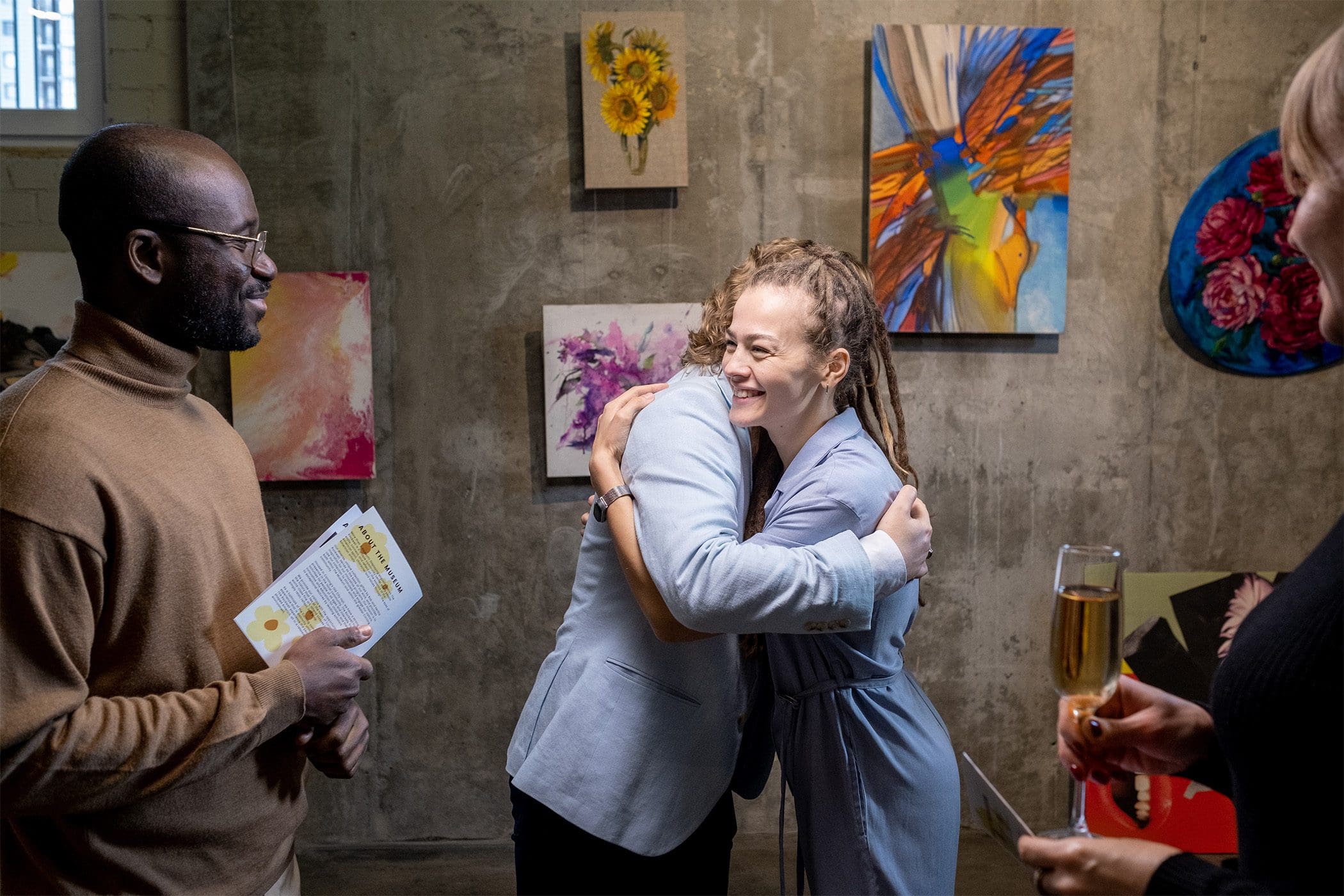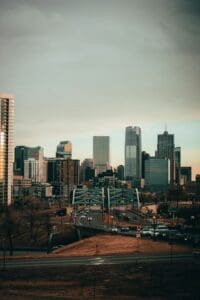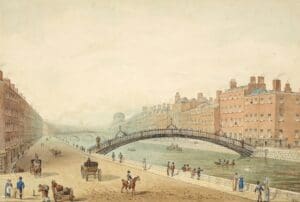By: Ella Smyth
2,000 artists across Ireland were recently selected to receive €325 a week as part of the new Basic Income for the Arts (BIA) pilot scheme, taking part in a three-year research project that examines their creative output, mental health, family life and alternate income streams while receiving the payment. The €105 million scheme received 9,000 applications from across the arts sector. The scheme, established by Minister for the Arts Catherine Martin in 2020, examines how the arts sector could adapt and recover from the coronavirus pandemic.
707 visual artists, 584 musicians, 204 artists working in film, 184 writers, 173 actors and artists working in theatre, 32 dancers and choreographers, 13 circus artists and 10 architects were selected for the programme using a lottery system managed by Ernst & Young.
“This is an absolute game changer. I can’t stress that enough”, said Leonie Collenan, one of the lucky artists selected for the scheme, in an interview with The University Times. After immigrating to Ireland in 2017, she initially struggled to re-establish her art practice in a new country.
Receiving the BIA payment will have a huge effect on her career. The payment will allow her to invest in her music practice as well as set up a studio for art lessons. “For the first time in my life I can focus all my energy on building an art practice. If I want to take on outside work, I can, but I don’t have to worry about making ends meet”, said Collenan.
Over the next three years, Collenan will complete regular surveys and keep a journal to log her activity. Her data, along with those of others selected for the programme, will be compared to a control group of 1,000 artists who did not receive the scheme. The data collected will determine the success and continuation of the scheme in the future.
Steven Tyrnan, from the band Left on Read, is another recipient of the scheme. For the first time in his life, he can dedicate himself to his passion for creating music. For him, the pilot scheme is a form of motivation. He notes: “I understand that the continuation of this project is dependent on its success and that just makes me more determined to succeed, because I want this to be available to all artists going forward”.
As the cost of living rises in Dublin, financial stability for artists is a huge concern. Affordable studio space and accommodation are harder than ever to come by. Most artists need to focus on surviving financially rather than honing their craft. Musician Colm Duggan described how he has spent years juggling multiple jobs while trying to release music. Between his day job and recording he would usually work 70-80 hours per week. As a recipient of the BIA, Duggan is finally free to focus on his passion.
Time isn’t the only challenge facing artists – the pressure to monetise art creates its own challenges. Many artists feel that it interferes with their creative process. Collenan notes that “there’s a pull to make the type of work that you think people might want to buy, and that’s dangerous for the arts in a different way”.
Artist Luke van Gelderen is a recent graduate student who did not receive the BIA. He also finds the pressure of monetisation restrictive, highlighting that “with the lack of spaces and business orientated studios, there is very little time and space to experiment without monetising every aspect of your artistic production”. Van Gelderen continues, stressing, “I feel this has created a situation where autonomy for artists is extremely difficult”.
For many, the BIA scheme represents creative as well as financial freedom. Removed from the pressure of pleasing customers, artists are permitted to be creative on their own terms. “I don’t have to justify what I make to anyone else. I get to do the things that I love and make them as good as possible, without any compromises”, Collenan shared.
However, the response to the BIA has not been entirely positive. The scheme received a lot of criticism for its treatment of disabled artists. While artists who receive disability allowances or blind pension are entitled to the BIA, it will be assessed, if they receive it, as a self-employed income. This means that any disabled artists who receive the payment will have their disability supports reduced. Essentially, being a recipient of the scheme would have no benefit to them.
This is a massive blow to disabled artists who already have increased living costs. Due to varied levels of ability, disabled artists may not be able to work for as many hours as able-bodied people or produce the same amount of work. As a result, many disabled artists rely on grants from the Arts Council or are forced to live in poverty. Monaghan County Council proposed a motion to launch a pilot scheme for artists with disabilities to co-exist alongside the BIA pilot scheme, which would allow artists to receive both payments.
Another common criticism of the scheme focuses on the selection process.
Some consider the process of determining an artist’s eligibility for the scheme extremely problematic.
Brendan Madden, an artist who was not deemed eligible for the scheme, designs and makes woven textiles that function as fashion accessories. Despite experiencing serious financial difficulties, he has continued to work in the arts sector for 13 years, and in 2015 he started a sustainable textile company. As a well-known artist in his field, Madden has travelled to embassies in foreign cities as a representative of the Irish arts sector.
After Madden spent over a decade working on his craft, his work was deemed too commercial to qualify as art. The artist described it as a hugely invalidating experience. “What hurts is when someone says you’re not an artist”, said Madden. “Because it’s like an identity thing. It’s literally my identity.”
Madden took part in an online consultation in which he was presented with a rough draft of the scheme and asked to make suggestions. Many of his concerns did not make it into the final report. One of his main issues with the BIA is that the application process has no way of separating people who were serious about their creative practice from people who practised it as a hobby.
Unless they were dedicating a certain number of hours to their craft, Madden believes they shouldn’t be financially supported. “I just don’t think we should be giving money for people’s hobbies. And that’s where it’s very hard, how to assess whether it’s a hobby or a serious endeavour.” In Madden’s opinion, the scheme was not thought through correctly. He elaborates, saying, “people told me ‘oh yeah my colleague, he got it because he had acted in a production two years ago’”.
He emphasised how giving the BIA to a person who is not serious about their craft could actually reduce their potential. In Madden’s graduate class at NCAD, only three out of the 70 students went on to work as artists or makers.
“There are many talented artists who will never be artists”, said Madden.
By giving the BIA payment to artists who aren’t serious about their craft, there is the potential to pressure them to monetise their art, which could damage their growth. The payment could also lead to financial dependence. “After the two years of being on the scheme you’re not going to be able to generate that €325 a week”, he added.
Madden believes the scheme works best as a temporary measure, either as a jumping-off point for artists or as a benefit that allows them to take a break from relentless monetisation. However, he feels that the BIA really comes down to “the government throwing money at people” with seemingly very little thought or planning. Madden’s disappointment in the scheme is severe. He shared, “I really invested a lot in this because I believed in it and it’s just another scheme to make someone look good”.
The public response to the BIA can be boiled down to how Ireland values its arts and culture. Many artists reported that they were afraid to announce that they had received the scheme for fear of negative backlash. Madden notes, “there’s a lot of bitterness towards the arts community”. With gas and electricity prices rising, many felt that the money could have been better spent elsewhere. Others argued that the scheme is not good enough and that a universal basic income is the only way to go.
The coronavirus pandemic had a devastating effect on the livelihoods of artists and performers. However, it also reminded us of the value of the arts. People leaned into and relied on music, art, poetry and films in order to get themselves through difficult times. While the BIA is not without its flaws, it represents a huge step forward for Ireland. If successful, it could have a huge impact on generations of future artists.





















